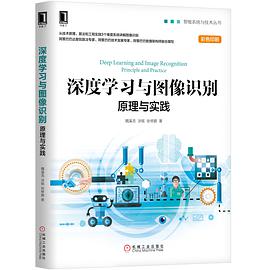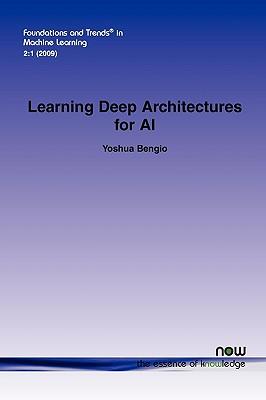-

深度学习与图像识别:原理与实践
这是一部从技术原理、算法和工程实践3个维度系统讲解图像识别的著作,由阿里巴巴达摩院算法专家、阿里巴巴技术发展专家、阿里巴巴数据架构师联合撰写。
在知识点的选择上,本书广度和深度兼顾,既能让完全没有基础的读者迅速入门,又能让有基础的读者深入掌握图像识别的核心技术;在写作方式上,本书避开了复杂的数学公式及其推导,从问题的前因后果 、创造者的思考过程,利用简单的数学计算来做模型分析和讲解,通俗易懂。更重要的是,本书不仅仅是聚焦于技术,而是将重点放在了如何用技术解决实际的业务问题。
全书一共13章:
第1-2章主要介绍了图像识别的应用场景、工具和工作环境的搭建;
第3-6章详细讲解了图像分类算法、机器学习、神经网络、误差反向传播等图像识别的基础技术及其原理;
第7章讲解了如何利用PyTorch来实现神经网络的图像分类,专注于实操,是从基础向高阶的过渡;
第8-12章深入讲解了图像识别的核心技术及其原理,包括卷积神经网络、目标检测、分割、产生式模型、神经网络可视化等主题;
第13章从工程实践的角度讲解了图像识别算法的部署模式。
购买本书的读者请在http://www.hzcourse.com/web/refbook/detail/8376/226
下载源代码
-

Learning Deep Architectures for AI
Theoretical results suggest that in order to learn the kind of complicated functions that can represent high-level abstractions (e.g., in vision, language, and other AI-level tasks), one may need deep architectures. Deep architectures are composed of multiple levels of non-linear operations, such as in neural nets with many hidden layers or in complicated propositional formulae re-using many sub-formulae. Searching the parameter space of deep architectures is a difficult task, but learning algorithms such as those for Deep Belief Networks have recently been proposed to tackle this problem with notable success, beating the stateof- the-art in certain areas. This monograph discusses the motivations and principles regarding learning algorithms for deep architectures, in particular those exploiting as building blocks unsupervised learning of single-layer models such as Restricted Boltzmann Machines, used to construct deeper models such as Deep Belief Networks.